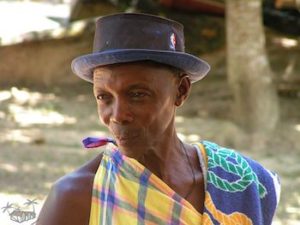
*The Afro Surinamese people celebrated this date in 1500. They are the inhabitants of Suriname, and they are of Sub-Saharan African ancestry.
They are descended from enslaved Africans brought to work on sugar plantations through the Middle Passage. Origins Most enslaved people imported to Suriname came from West Central Africa. The total number of enslaved people was estimated at 220,000. The Akan people from central Ghana were, officially, the predominant ethnic group of slaves in Suriname.
However, in practice, enslaved people from Loango, purchased in Cabinda, Angola, were the largest group of slaves in Suriname since 1670; they surpassed the number on the Gold Coast in almost all periods. Enslaved people, including the Ewe (who live in southern Ghana, Togo, and Benin, Igbo (from Nigeria), Yoruba (from Benin), and Kongo (who live in the Republic of Congo, Democratic Republic of the Congo, and Angola, all left their cultural footprints in Suriname.
History
The Dutch were involved in the slave trade during the early colonial years. They sought office space for their plantations. The space they received was when the British, in the Treaty of Breda (1667), gave land on the northern coast of South America, ceded to them in exchange for New York. Suriname became a slave colony. Slaves were rapidly shipped from Africa to Suriname to work on coffee, cocoa, and sugar plantations for the Dutch and other Europeans.
Afro Surinamese scholar Gloria Wekker debates whether working-class women retained pre-colonial African cultural understandings of gender, sexuality, and spirituality. She and other theorists say that African cultural retentions are often found in Afro-diasporic communities that either had irregular contact with dominant groups of the host community or shielded their cultural retentions from their colonizers.
Wekker observes that Surinamese slaves socialized, communicated, and communed with little white cultural, social, or linguistic interference. Many escaped the plantations and formed independent settlements known as Maroons and Bushinengue. They maintained vestiges of African culture and language. They are two ethnic subgroups (Creoles and Maroons). Escaped enslaved people in Suriname and French Guiana fled to the interior. They joined with indigenous peoples to create several independent tribes: the Saramaka, the Paramaka, the Ndyuka (Aukan), the Kwinti, the Aluku (Boni), the Matawai, and the Brooskampers.
By 1740, the maroons had formed clans and felt strong enough to challenge the Dutch colonists, forcing them to sign peace treaties. Because of their long isolation in interior rainforests, they maintained more African culture than ethnic Africans in the cities. From 1972 to 1978, two American professors, S. Allen Counter, and David L. Evans, made seven voyages upriver into the maroon areas. Both African Americans wanted to contact these communities and learn about the peoples, to see what African cultures they followed. By the 1980s, the maroons in Suriname had begun to fight for their land rights to protect the territory they had long occupied. They won a critical case in 2007 at the Inter-American Court of Human Rights, which ruled they had rights to their traditional lands.